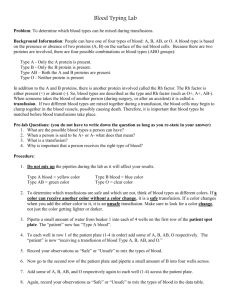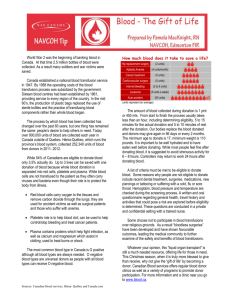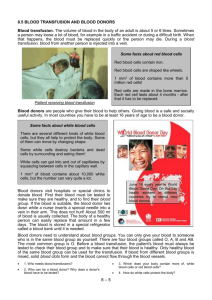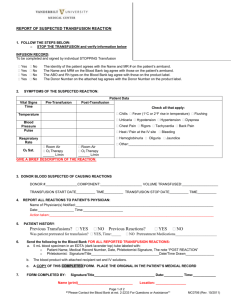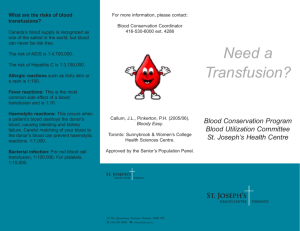Blood Typing Lab - Land of Biology
advertisement
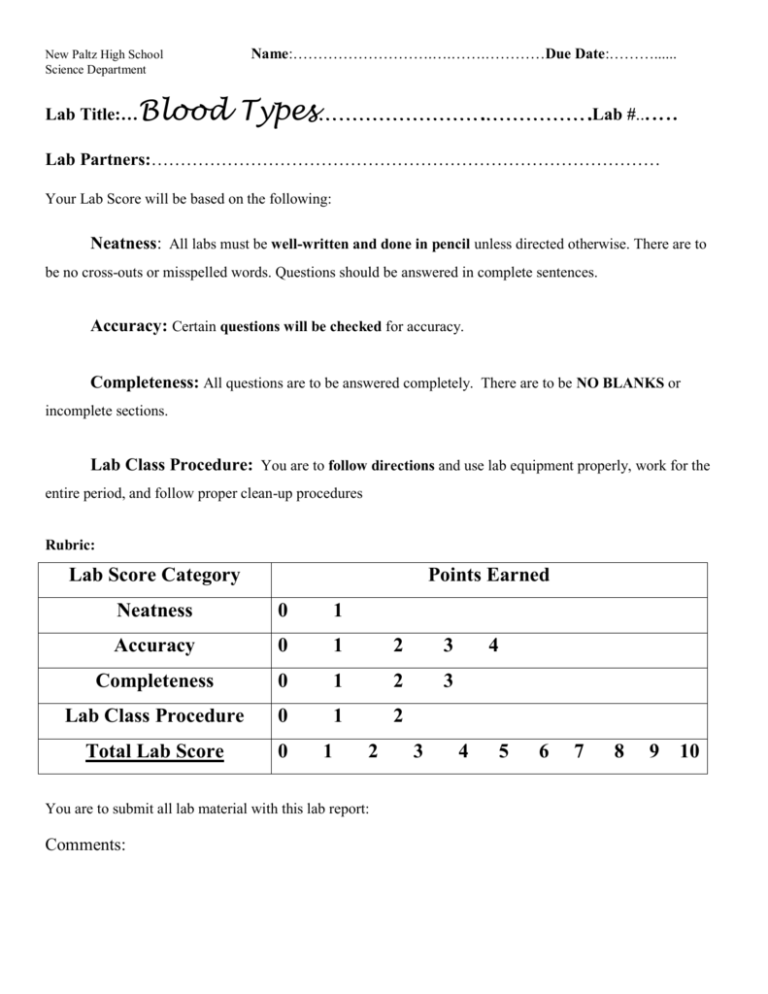
Name:……………………….….…….…………Due Date:………...... New Paltz High School Science Department Lab Title:…Blood Types…………………….…………….Lab #....... Lab Partners:…………………………………………………………………………… Your Lab Score will be based on the following: Neatness: All labs must be well-written and done in pencil unless directed otherwise. There are to be no cross-outs or misspelled words. Questions should be answered in complete sentences. Accuracy: Certain questions will be checked for accuracy. Completeness: All questions are to be answered completely. There are to be NO BLANKS or incomplete sections. Lab Class Procedure: You are to follow directions and use lab equipment properly, work for the entire period, and follow proper clean-up procedures Rubric: Lab Score Category Points Earned Neatness 0 1 Accuracy 0 1 2 3 Completeness 0 1 2 3 Lab Class Procedure 0 1 2 Total Lab Score 0 1 2 You are to submit all lab material with this lab report: Comments: 3 4 4 5 6 7 8 9 10 Another Bloody Lab Background Information: In the ABO blood-typing system, people can have one of four types of blood: A, B, AB, or O. A blood type is based on the presence or absence of two proteins (A, B) on the surface of the red blood cells. These are the same types of proteins we discussed as receptor molecules. Because there are two proteins are involved (and genes come in pairs – More on that next unit), there are four possible combinations or blood types (ABO groups): In addition to the A and B proteins, there is another protein involved called the Rh factor. The Rh factor is another receptor molecule protein and is either present (+) or absent (-). So, blood types are described as the type and Rh factor (such as O+, A+, AB-). When someone takes the blood of another person (during surgery, or after an accident) it is called a transfusion. If two different blood types are mixed together during a transfusion, the blood cells may begin to clump together in the blood vessels, possibly causing death. Therefore, it is important that blood types be matched before blood transfusions take place. Problem: To determine which blood types can be mixed during transfusions. Materials: 4 beakers, spot plate, water, simulated “blood”, 4 pipettes Procedure: 1. To determine which transfusions are safe and which are not, think of blood types as different colors. If a color can receive another color without a color change, it is a safe transfusion. If a color changes when you add the other color to it, it is an unsafe transfusion. Make sure to look for a color change, not just the color getting lighter or darker. 2. Pipette a small amount of “blood” from the A-type beaker into each of 4 wells on the first row of the patient spot plate. The “patient” now has “Type A blood”. 3. To each well in row 1 of the patient plate (1-4 in order) add some of A, B, AB, O respectively. In each case, the “patient” is now “receiving” a transfusion of blood - Type A, B, AB, or O. 4. Record your observations as “Safe” or “Unsafe” to mix the types of blood. (Look at step 1 if you don’t know how to tell.) 5. Now go to the second row of the patient plate and pipette a small amount of B into four wells across. 6. Add some of A, B, AB, and O respectively again to each well (1-4) across the patient plate. 7. Again, record your observations as “Safe” or “Unsafe” to mix the types of blood in the data table. 8. Repeat the steps for all combinations: A:A, A:B, A:AB, A:O, B:B, B:AB, B:O, AB:AB, AB:O, O:O 9. When finished wash out the spot plate and the clean up your lab area. Data: Safety of blood transfusions Blood Type Patient Type A Patient Type B Patient Type AB Patient Type O Donor Type A Donor Type B Donor Type AB Donor Type O Data Analysis: 1. What blood types can Type A blood: a. Receive? ______________________________________________________ b. Donate to? _____________________________________________________ 2. What blood types can Type B blood: a. Receive? ______________________________________________________ b. Donate to? _____________________________________________________ 3. What blood types can Type O blood: a. Receive? ______________________________________________________ b. Donate to? _____________________________________________________ 4. What blood types can Type AB blood: a. Receive? ______________________________________________________ b. Donate to? _____________________________________________________ 5. Which blood type can give to ALL other blood types and is known as the UNIVERSAL DONOR?______________________________________________ 6. Which blood type can receive blood from all other blood types and is known as the UNIVERSAL RECIPIENT? _______________________________________ 7. What are the 4 major parts of blood? ______________________________________ ________________________________________________________________ 8. Which of these 4 parts determine a person’s blood type? ___________________ 9. What are the cell surface proteins that determine blood type also called?________________________ 10. Complete the diagrams below indicating which ABO blood type antigens (receptor molecules on foreign cells) are present on cells of each blood type. Type A cell is completed as an example: Type A A Type B A A A A A A A A A A Type AB Type O
